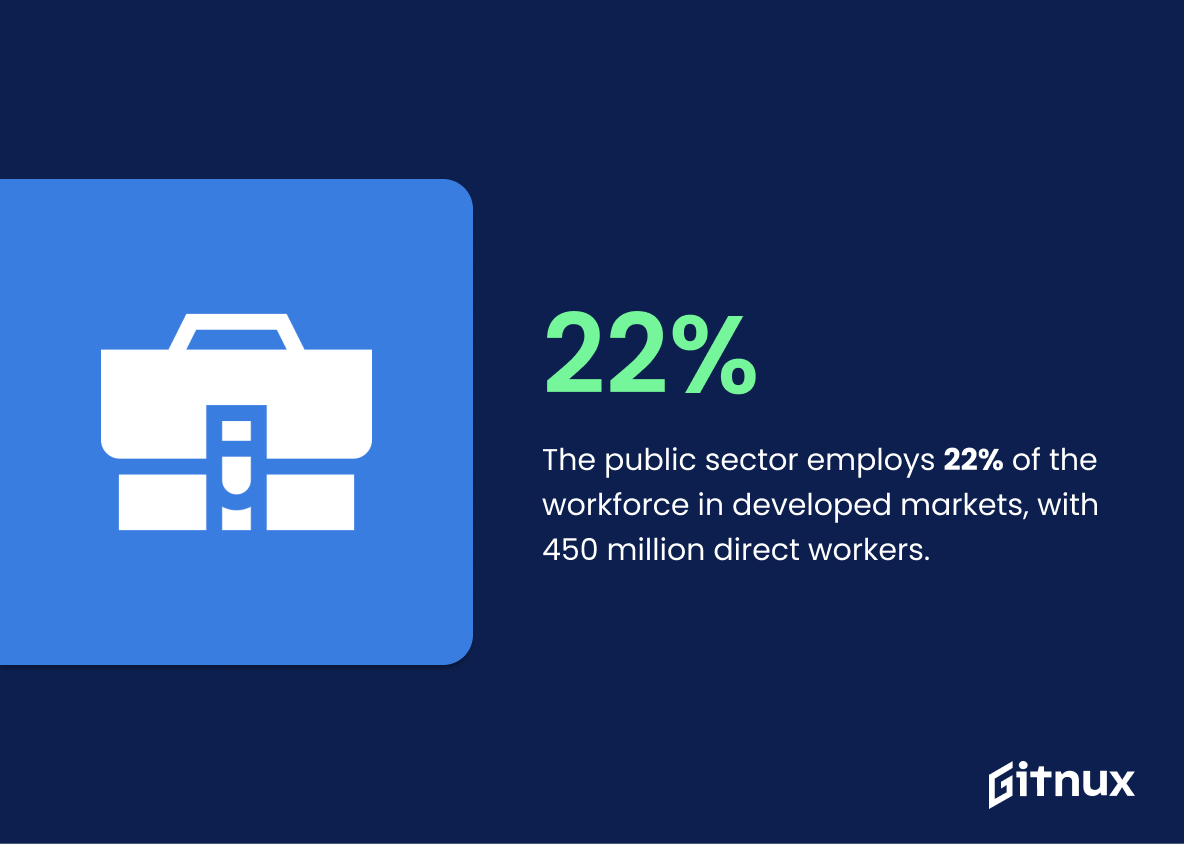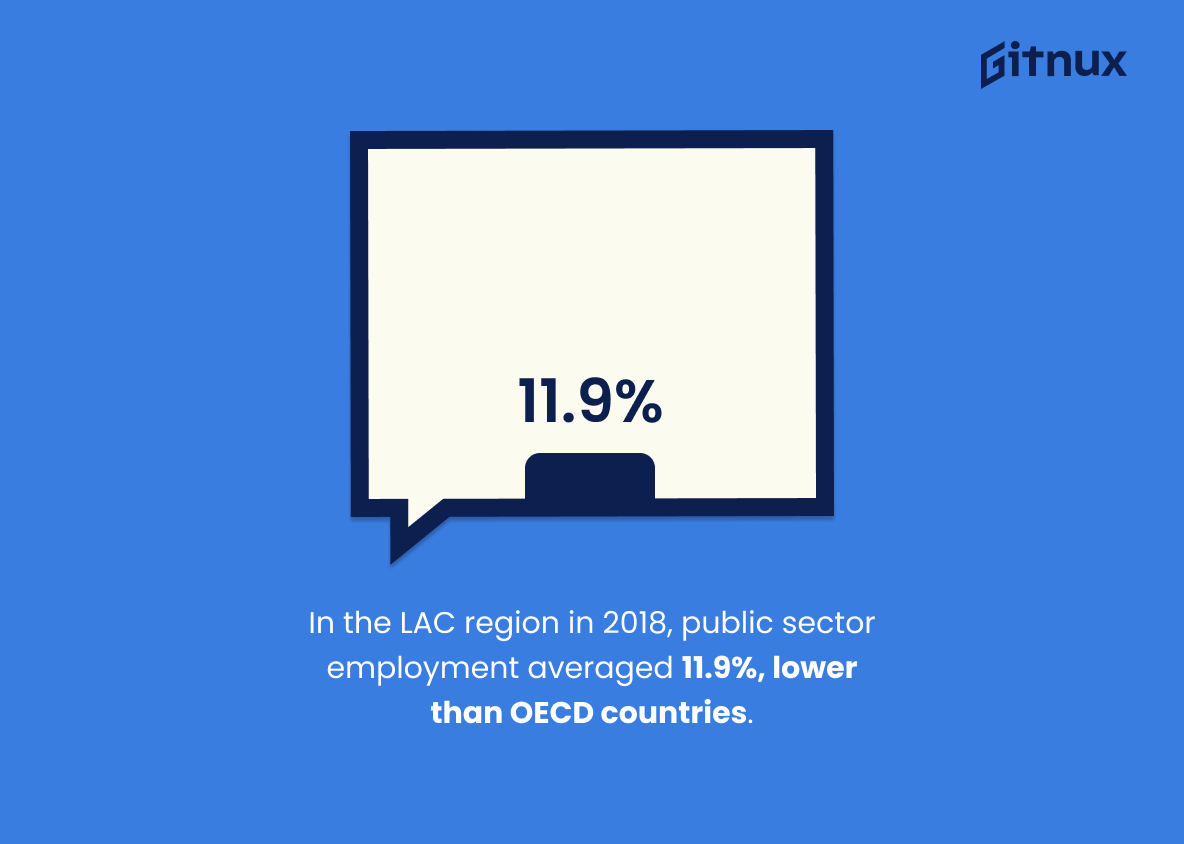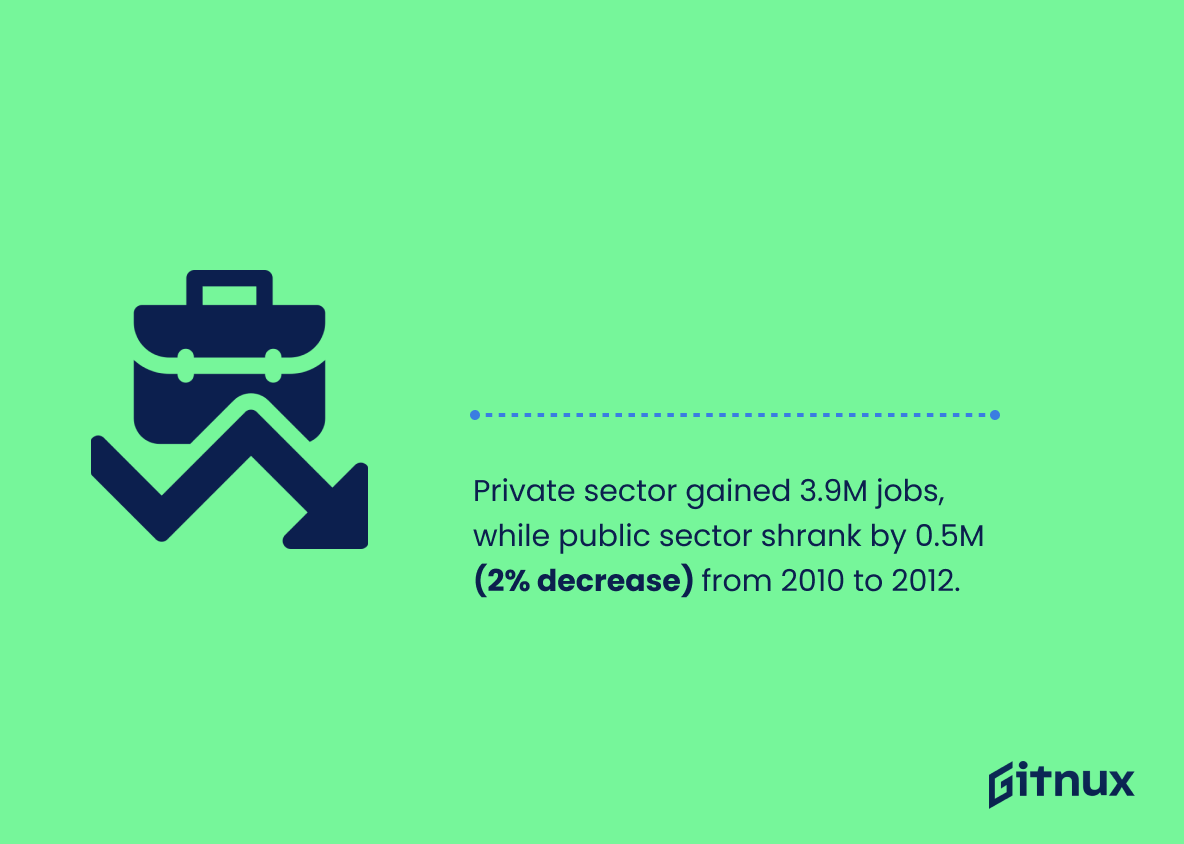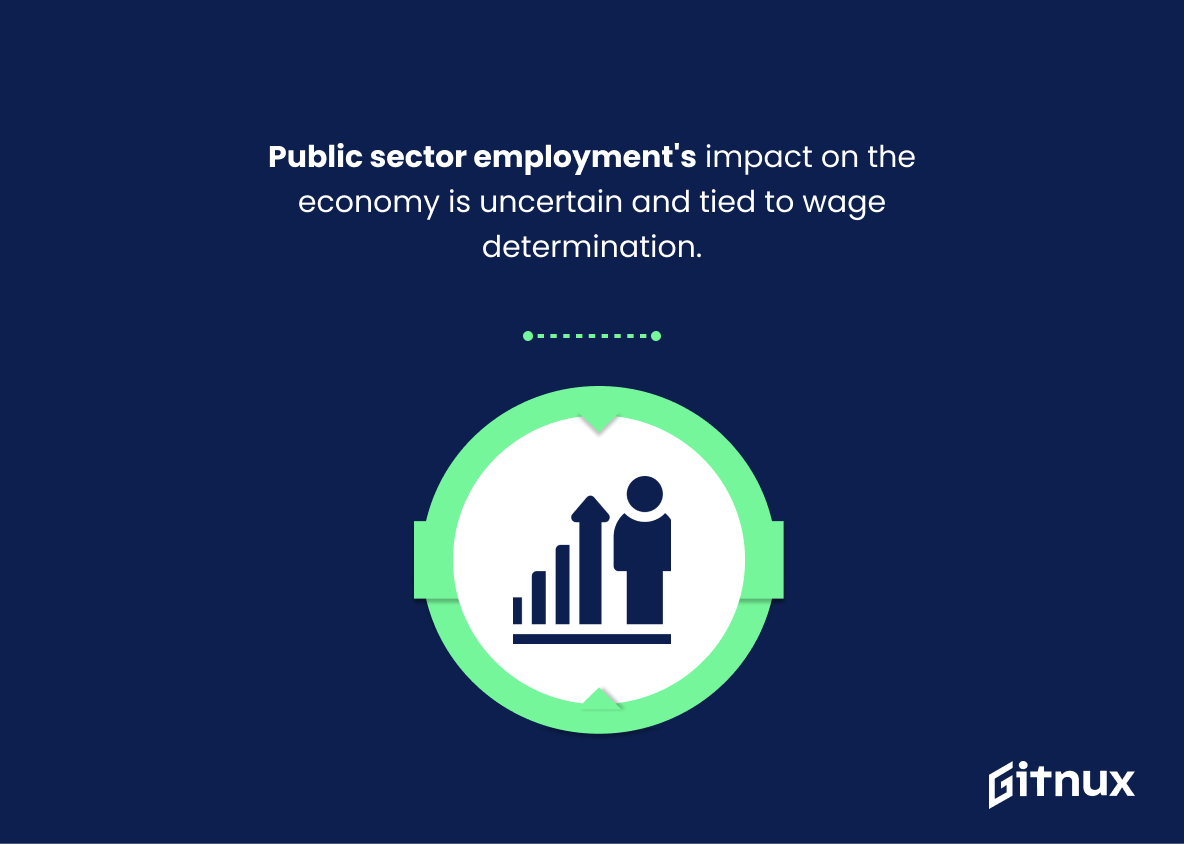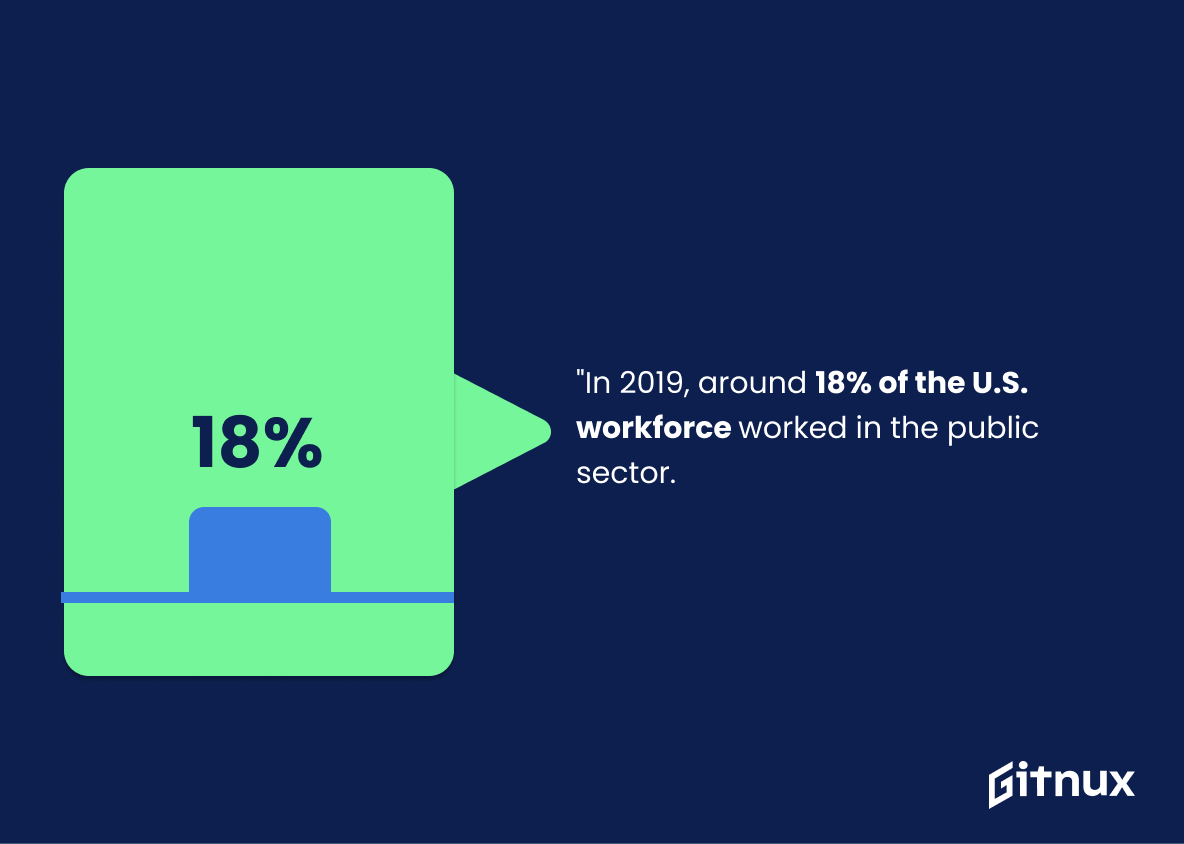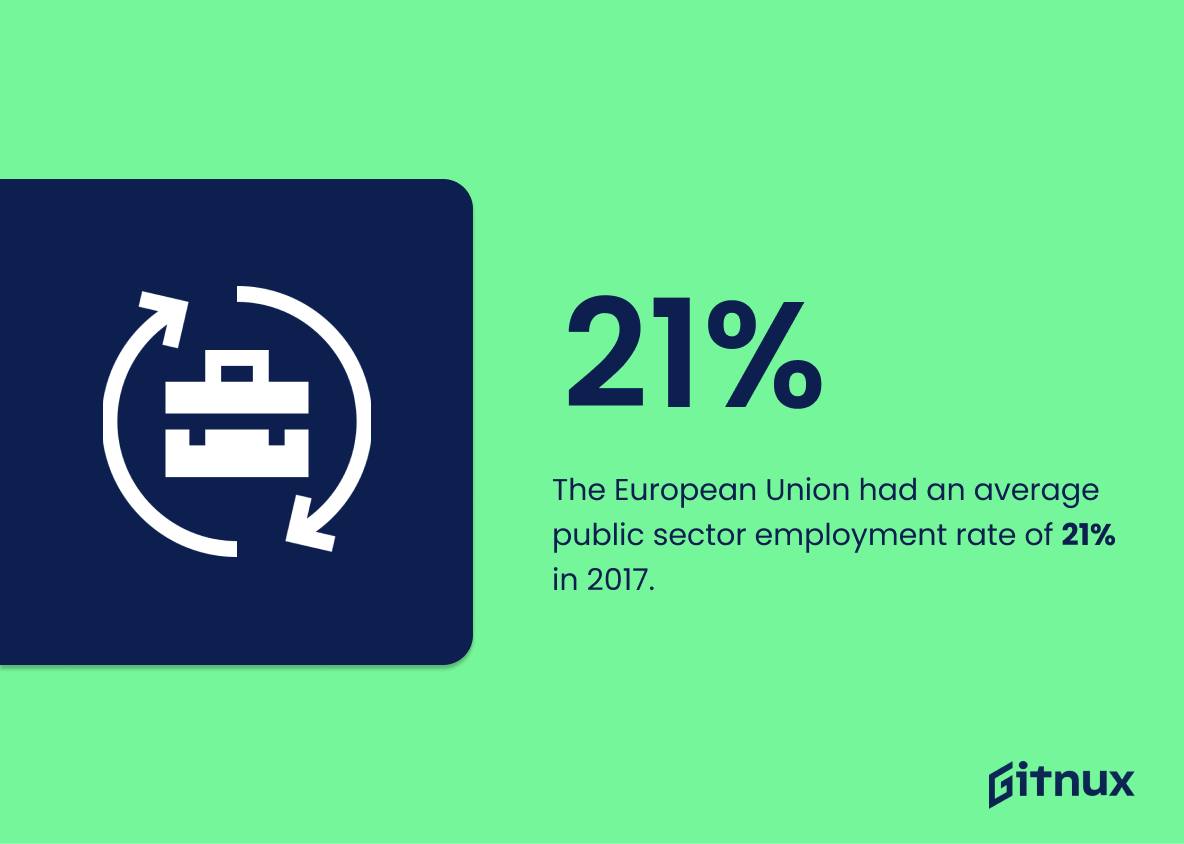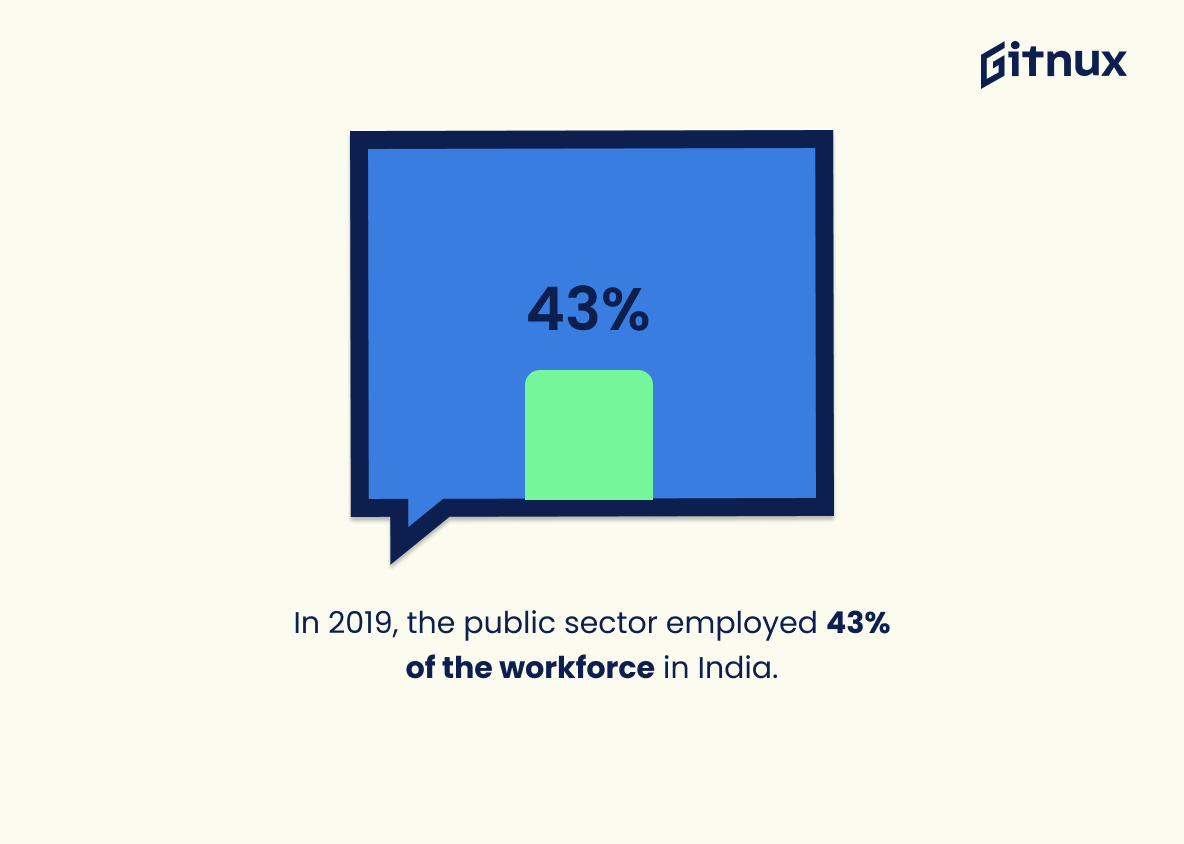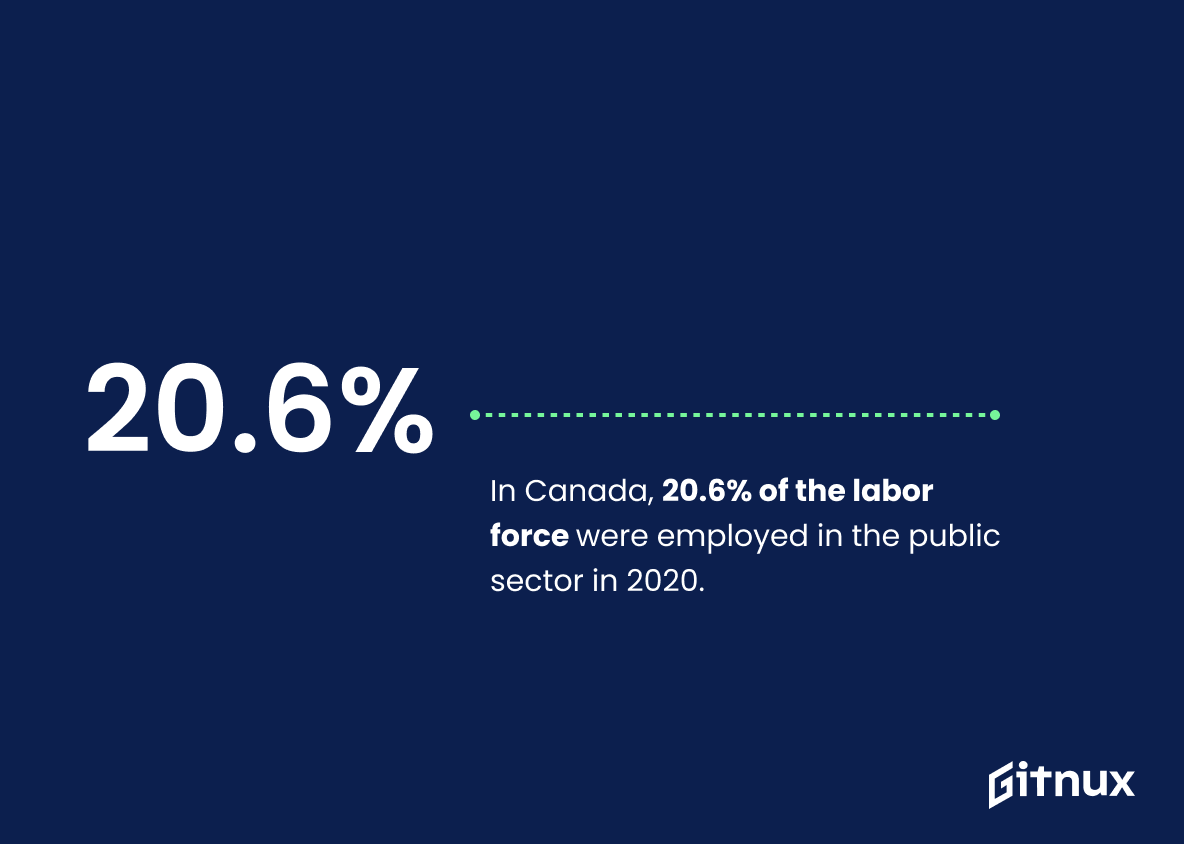Welcome to the blog post about public sector employment statistics. This article will provide an overview of the current state of public sector employment in the United States, as well as a look at some of the trends that have been observed in recent years.
We will also discuss the implications of these trends for the economy and public policy. Finally, we will provide some tips for interpreting and using public sector employment data. So, let’s get started.
Public Sector Employment: Most Important Statistics
Private industries have added 3.9 million estimated jobs from 2010 to 2012, while the public sector has contracted by nearly half a million jobs (a 2% decrease).
Public sector employment as a percentage of total employment in the LAC region is much lower than in OECD countries, with an average of 11.9% in 2018.
Public Sector Employment: Statistics Overview
The public sector employs 22% of the total employment in developed market-economy countries, with 450 million people employed directly in the sector.
This provides an indication of the size and scope of the public sector, and the number of people it employs. This information is important for understanding the economic and social impact of the public sector, and for making informed decisions about its future.
Public sector employment as a percentage of total employment in the LAC region is much lower than in OECD countries, with an average of 11.9% in 2018.
This reflects the role of government in the economy and society, and how public services are delivered. It is an important indicator of the size of the public sector, and can be used to inform policy decisions.
Private industries have added 3.9 million estimated jobs from 2010 to 2012, while the public sector has contracted by nearly half a million jobs (a 2% decrease).
The private sector is creating more jobs than the public sector, which could be indicative of a shift in the economy.
The Private and Public Sectors are two distinct entities that contribute to a country’s domestic production and economic activity, and it is significant to understand the differences between them in order to accurately measure Public Sector Employment Statistics.
The public sector is the largest employer in South Africa, with employment increasing from 1.9 million to 2.8 million between 2002 and 2017.
This highlights the role of the government in providing employment opportunities in South Africa, and shows the trends in the labour market.
This information can be used to inform policy decisions and help to ensure that the public sector is able to continue to provide employment opportunities for South Africans.
A paper proposes systematic actions to reduce pitfalls and blind spots in the analysis and understanding of government debt in South Africa, and describes advances in the compilation and analysis of public sector debt statistics.
This provides a comprehensive overview of the current standing of South African public debt, and offers solutions on how the South African government can address this issue.
The paper also provides insight into the compilation and analysis of public sector debt statistics, which can help inform decisions regarding public sector employment.
Public sector employment has uncertain effects on the economy and is dependent on how public wages are determined.
This provides insight into how governments can effectively regulate the size of the public sector in order to stabilize targeted national employment levels.
The public sector is a growing ring of institutions, with the central government at the center, that contributes to economic development.
It helps to provide insight into the economic development of nations, which is important for understanding the job market and the overall health of the economy.
In 2013, women represented, on average, 58% of the total public sector workforce in OECD countries.
This demonstrates the importance of equal representation of women in the public sector. This helps to create fairness, openness and representativeness in the labour market, as well as improving the quality of service delivery through a better understanding of the citizenry.
Women are increasingly entering the paid workforce, and public sector employment is providing them with more opportunities.
This shows that gender equity in the public sector is improving, which can lead to better social and economic outcomes. This is beneficial for both the public sector and society as a whole.
As of 2019, about 18 percent of the employed workforce in the United States were employed in the public sector.
A significant portion of the employed workforce is employed in the public sector, which is a testament to the importance of the public sector in the US economy. This statistic is especially relevant in the context of a blog post about public sector employment statistics, as it provides a snapshot of the current state of public sector employment in the US.
In 2020, there were 7.43 million public sector jobs in the United Kingdom.
This highlights the sheer number of people employed in the public sector, and the impact that these jobs have on the economy. It also serves as a reminder of the importance of public sector employment in providing essential services to the public. This statistic is a valuable insight into the state of public sector employment in the UK, and is an important factor to consider when discussing the topic.
The European Union had an average public sector employment rate of 21% in 2017.
A significant portion of the EU workforce is employed in the public sector, and thus provides a valuable insight into the economic and social landscape of the region. Furthermore, it serves as a benchmark for comparison with other countries and regions, allowing for a better understanding of the public sector employment dynamics in the EU.
In 2019, the public sector employed 43% of the workforce in India.
A significant portion of the workforce is employed by the public sector, which is a major contributor to the country’s economic growth. This statistic is especially relevant in a blog post about public sector employment statistics, as it provides a snapshot of the current state of the public sector in India.
In Canada, 20.6% of the labor force were employed in the public sector in 2020.
A significant portion of the labor force is employed in the public sector, which is a major contributor to the country’s economy. This statistic is especially relevant in the context of a blog post about public sector employment statistics, as it provides a snapshot of the current state of the public sector in Canada.
In Australia, public sector employment accounted for approximately 15.4% of total employment in 2020.
The provides insight into the number of people employed in the public sector, which is an important source of economic stability and growth. This statistic is also important for understanding the impact of public sector employment on the overall economy, as it can provide insight into the level of public sector investment and the potential for job creation. Furthermore, this statistic can be used to compare the public sector employment rate in Australia to other countries, allowing for a better understanding of the relative strength of the public sector in Australia.
In 2019, local government made up the largest share of public sector employment in the United States at 63.3%.
Local government is the largest employer in the public sector, and thus plays a major role in the economy. This is especially relevant in the context of a blog post about public sector employment statistics, as it provides a valuable insight into the current state of the public sector.
The public sector employed around 32% of the workforce in Brazil in 2019.
A significant portion of the workforce is employed in the public sector, which is a major contributor to the country’s economic growth and stability. Furthermore, it provides insight into the government’s commitment to providing employment opportunities to its citizens. This statistic is an important factor to consider when discussing public sector employment statistics in Brazil.
In 2020, there were over 2 million public sector employees in Germany.
This demonstrates the sheer scale of the public sector workforce and the impact it has on the country’s economy. It also highlights the need for governments to ensure that public sector employees are adequately supported and compensated for their work. This statistic is a valuable insight into the state of public sector employment in Germany and can be used to inform policy decisions and help shape the future of the public sector.
In 2020, about 24% of Japan’s workforce was employed in the public sector.
This demonstrates the extent to which the government is involved in providing employment opportunities for its citizens, and the impact it has on the country’s overall workforce. It also provides insight into the economic stability of the nation, as a large portion of the population is employed in the public sector. This statistic is an important factor to consider when discussing public sector employment statistics in Japan.
In 2019, about 24% of South Korea’s workforce was employed in the public sector.
A significant portion of the workforce is employed in the public sector, which is a major contributor to the country’s economic growth and stability. This statistic is essential to understanding the impact of public sector employment on the South Korean economy and provides valuable insight into the country’s labor market.
In the United States, public sector employment for women increased by 8.8% from 2009 to 2019.
This highlights the strides taken to ensure that women are given equal opportunities in the public sector, and that their contributions are valued and recognized. This statistic is an important reminder that the public sector is a viable career option for women, and that the sector is actively working to create a more equitable and inclusive workplace.
In Sweden, about 30% of the workforce was employed in the public sector in 2019.
The reveals the extent to which the government is relying on public sector jobs to drive economic growth and provide employment opportunities for its citizens. This statistic is also important in understanding the impact of public sector employment on the overall labor market, as well as the impact of public sector policies on the economy.
About 84% of public sector employees in the United States worked at the state and local government levels in 2017.
The majority of public sector employees are employed at the state and local level, demonstrating the significance of these government entities in providing services to the public. This is an important point to consider when discussing public sector employment statistics, as it provides insight into the scope of public sector employment and the impact it has on the nation.
In New Zealand, public sector employment accounted for approximately 18.7% of total employment in 2020.
This provides insight into the number of people employed in the public sector, which can be used to gauge the overall strength of the economy. Additionally, it can be used to measure the effectiveness of government policies and initiatives, as well as the impact of public sector employment on the overall job market. By understanding the current state of public sector employment in New Zealand, we can better understand the country’s economic situation and make informed decisions about the future.
Conclusion
Public sector employment statistics are a valuable tool for understanding the economic health of a region. They can provide insight into the job market, wages, and other economic indicators. By understanding public sector employment statistics, governments, businesses, and citizens can make informed decisions about their economic future.
With the right data and analysis, public sector employment statistics can be used to inform policy decisions and help create a more prosperous future.
References
1 – https://www.ilo.org/public/english/bureau/stat/download/wp_pse_e.pdf
2 – https://www.oecd-ilibrary.org/sites/b9bd53f6-en/index.html?itemId=/content/component/b9bd53f6-en
3 – https://lightcast.io/resources/blog/comparing-private-and-public-sector-job-growth
4 – https://www.thebalancemoney.com/public-sector-vs-private-sector-5097547
5 – http://www.dpru.uct.ac.za/sites/default/files/image_tool/images/36/Publications/Other/2017-11-30%20Public%20Sector%20Factsheet.pdf
6 – https://www.bis.org/ifc/publ/ifcb39zj.pdf
7 – https://wol.iza.org/uploads/articles/332/pdfs/effects-of-public-sector-employment-on-economy.pdf?v=1
8 – https://www.geeksforgeeks.org/how-public-sector-contributes-to-the-economic-development-of-a-nation/
9 – https://www.oecd-ilibrary.org/docserver/gov_glance-2015-23-en.pdf?expires=1677882759&id=id&accname=guest&checksum=788D711A6FDC894C955742D65B7C249E
10 – https://blogs.worldbank.org/governance/five-facts-gender-equity-public-sector
11 – https://www150.statcan.gc.ca
12 – https://www.statista.com
13 – https://ec.europa.eu
14 – https://data.worldbank.org
15 – https://www.destatis.de
16 – https://www.abs.gov.au
17 – https://figure.nz
18 – https://www.macrotrends.net
19 – https://www.usgovernmentspending.com
20 – https://www.bls.gov
